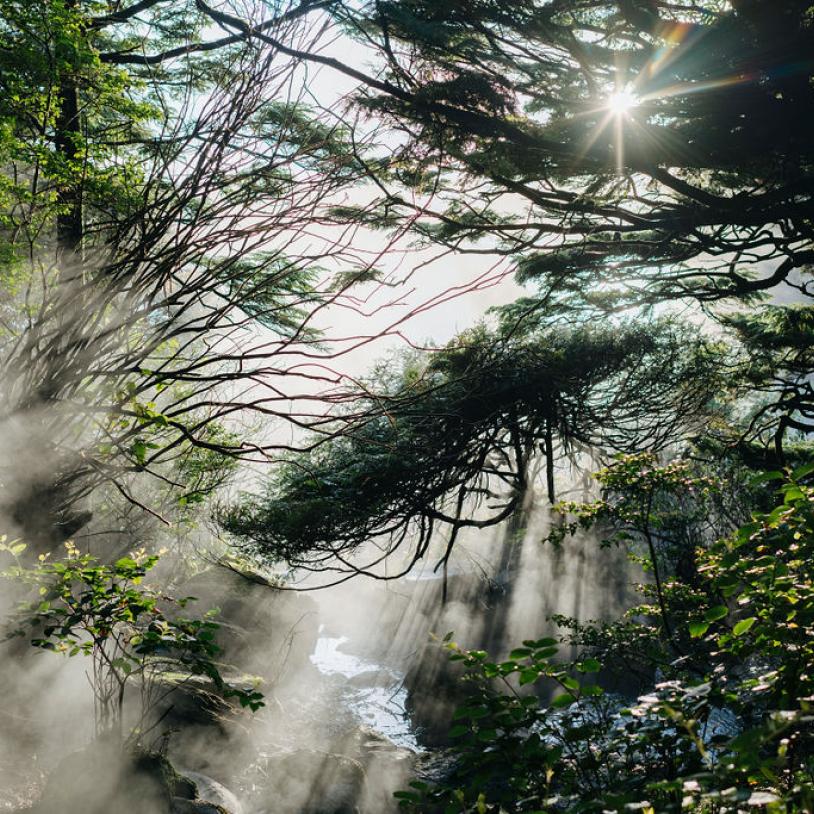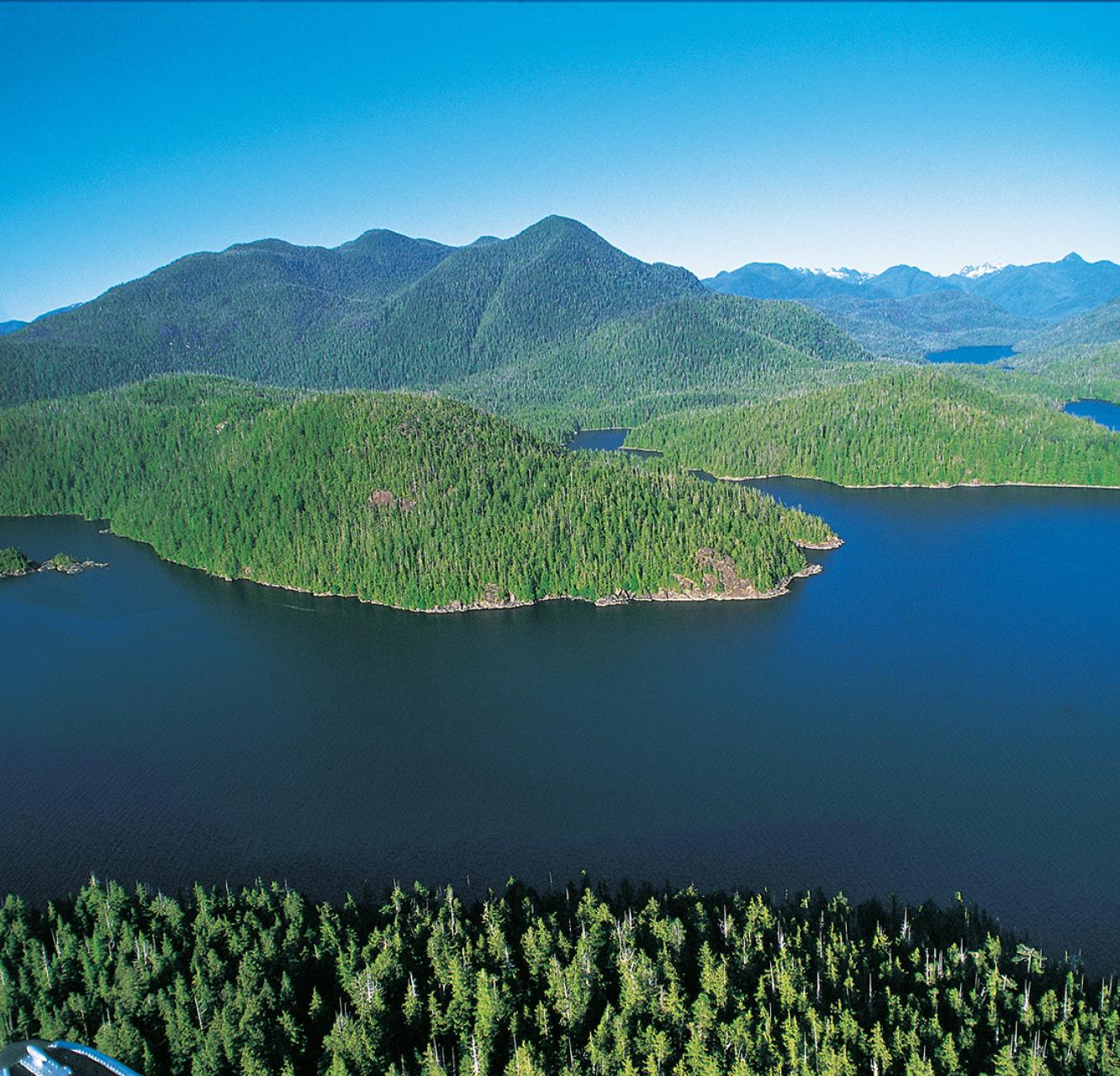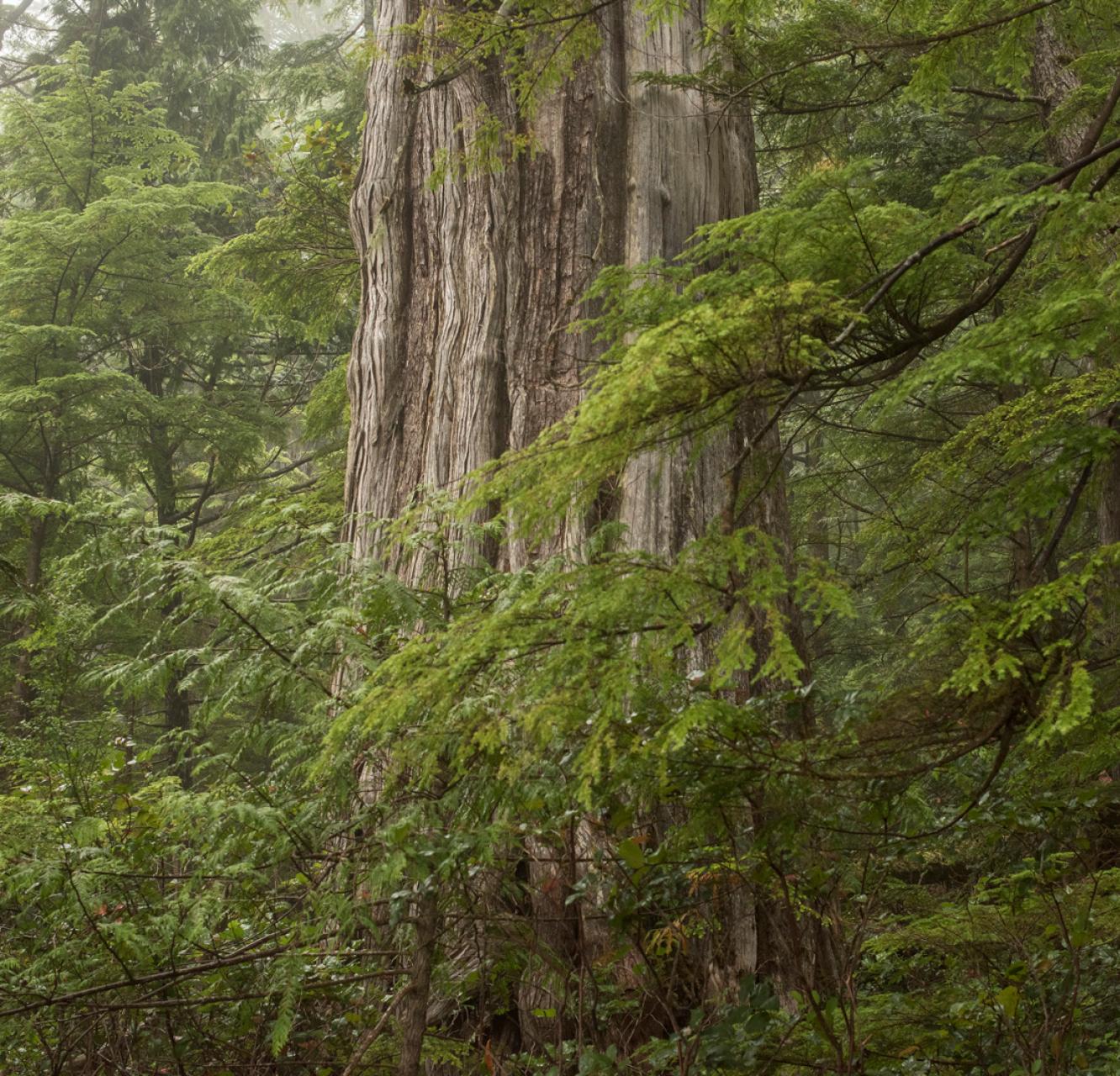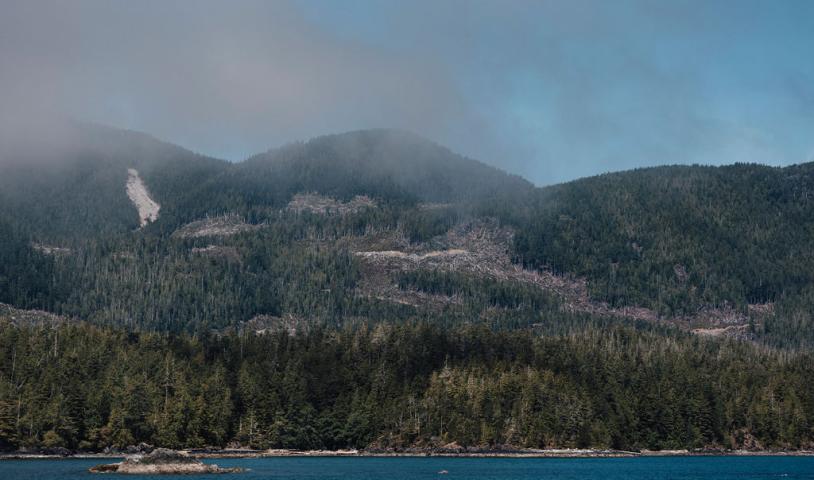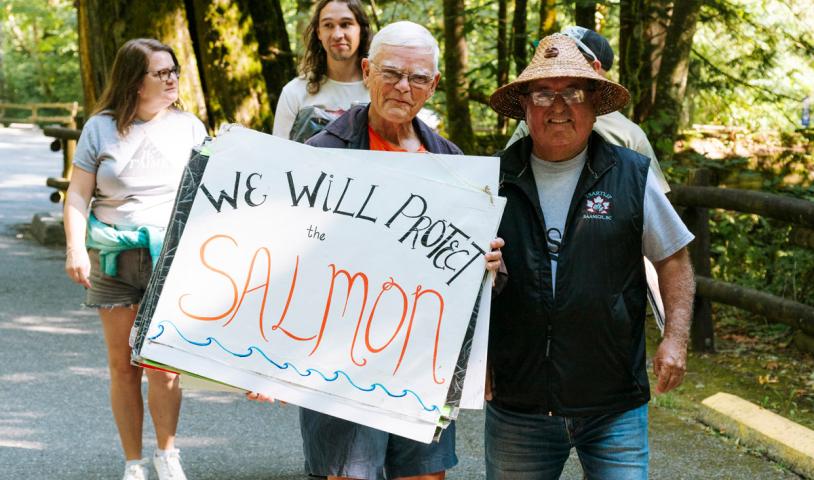Saving the biggest, oldest trees
Friday, March 8, 2013
The scene was primordial. We were following a rickety moss-covered boardwalk through a rain forest of immense trees and wild growth.
Moss and fungi clung to fallen trees and logs. Huckleberry and thimbleberry bushes sprouted. Delicate sword ferns carpeted the forest floor. Moss hung from branches like beards. I half expected a Jurassic Park velociraptor to charge through the undergrowth.
“We’re almost there,” said TJ Watt, 28, who calls himself a big-tree hunter. A photographer and founding member of the Ancient Forest Alliance, he has discovered many of the largest old-growth trees in southern Vancouver Island and works hard to protect them. Nimble and slim, he recently cut his dreadlocks and looks like a young executive
Suddenly, he stepped off the trail into a thicket of large skunk cabbages and pointed at the muddy ground. “Look, a cougar track.”
After photographing the paw print, we climbed over and ducked under large fallen trees along which plant life proliferated: moss, new trees sprouting, shelf fungi. Rays of sunlight angled through the high canopy. We stepped carefully over black-bear scat that lay on the trail like a blob of black porridge.
After an hour, Watt pointed to an immense red cedar, more than five metres (16 feet) across at its base. This was the Castle Giant, about a thousand years old and one of the largest trees in Canada. The behemoth has a weathered look and perhaps it should. It was already ancient when Columbus first set sail. Way up, immense spires branched out. We had walked past a lot of big cedars, but nothing like this one. It was a spiritual moment.
Logging threatens these giants
We crashed into the undergrowth where orange tapes were attached to trees. “These were placed by a timber company that plans to log here,” explained Watt. “This is the finest grove of old-growth cedars in the country. It must not be logged.” Only the rat-a-tat of a pileated woodpecker responded. Under the immense shadow of the Giant, I could not imagine wanting to cut it down.
We returned to Watt’s four-wheel-drive van and bumped along a maze of washboard logging roads toward Port Renfrew, a cloud of dust following behind. The scenery, a rolling landscape with a continuous patchwork of scarred clearcuts, is a complete contrast to Castle Grove. The devastation is amazing. Even steep hillsides are razed. Huge piles of wood debris litter the sides of the roads. Numerous quarries, which provide the rocks and gravel for access roads, scar the countryside. In the glorious sunshine, it made me think of the devastation of World War I trench warfare. And it stretched on and on.
Port Renfrew courts "tall tree" tourists
In town, I spoke with Jon Cash, the former president of the Port Renfrew Chamber of Commerce and co-proprietor of Soule Creek Lodge. He explained that for about a century Port Renfrew was a lumber town, but when the main company in the area moved its centre of operations to Lake Cowichan in 1990 it caused economic difficulties. “We had to re-invent ourselves,” said Cash. “We’ve recently started promoting tall tree tourism, and it’s working.”
Port Renfrew, known as the “Big Tree Capital of Canada,” is well positioned since many of the nation’s largest trees are found in the area. But it’s not easy, for the lumber industry covets old-growth trees, which are far more valuable than second-growth trees, and is quietly cutting down as many as possible.
Avatar Grove, the marquee tourist attraction
TJ Watt discovered the Grove, near Port Renfrew, in 2009. In 2011, after a fight in which the Ancient Forest Alliance played a key role, the provincial government declared the 59-hectare (146-acre) area off limits to logging.
I hiked in alone, clambering over roots, logs and rich undergrowth as I followed orange tape tied to branches. Boardwalks and trails will be constructed here over the next year. An old stump, over a metre across, was festooned with dozens of neon-bright orange bracket fungi, as though it was a garish Christmas decoration.
Hiking higher and deeper into the Grove I reached a large red cedar with a distinctive knobby appearance due to the growth of large burls all around it about ten feet up. It’s known as Canada’s Gnarliest Tree.
I scrambled up and perched on a burl with my back against the old matriarch. Surrounded by tall trees soaring heavenward, it felt like I was in a cathedral. Trees like this are national treasures, I thought.
Poachers, sneak thieves, steal these huge trees
As I drove back to town, my mind turned to an incident that captured the media spotlight and illustrated both the dollar-value of the old trees and the difficulty of protecting them.
An 800-year-old cedar was stolen by a gang of tree poachers. The crime took place in Carmanah Walbran Provincial Park about 25 kilometres northwest of Port Renfrew.
The tree was secretly cut most of the way through in 2011 but left standing for unknown reasons. In June 2012, the parks service, worried that the tree might topple in a high wind, had it felled. Subsequently, poachers — presumably the same gang that had cut it in 2011 — carved up the fallen tree and removed most of it. The theft was possible only because of the remote location. Best guess is that the cedar was used for shakes, roof shingles, and netted the perpetrators as much as $15,000. The authorities have no suspects.
Torrance Coste of the Wilderness Committee was instrumental in breaking the tree-poaching story to the press, where it went viral. “This incident is deplorable,” he said. “British Columbia parks should be examples to the world. We need to expand parks and provide more protection to old growth habitat.” Locals told me that poaching is common and almost always goes unreported.
The old trees are worth thousands of dollars
Logging firms want the mammoth trees, and their appetite is immense. Ancient trees have fine straight grain and can yield larger timbers than smaller trees. As a result, logging companies are relentlessly transforming old forests into young, second-growth forests. According to the Ancient Forest Alliance, more than 90 percent of old-growth forests in southern Vancouver Island’s valley bottoms, where the biggest trees are, have been logged.
“Come,” said Watt climbing into his van, “there’s something you need to see.” We bumped along a labyrinth of logging roads, stopping at the largest stump I have ever seen, about 14 metres (45 feet) in circumference. Watt told me the cedar, over 1,000 years old, had been cut recently. The surrounding clear-cut contained many other enormous stumps. All the trees had been felled legally. They will never be replaced.
My next destination was the San Juan Sitka Spruce, Canada’s largest spruce tree, about 40 minutes northeast of Port Renfrew. En route, I saw a Roosevelt elk with enormous antlers feeding in a meadow.
My jaw dropped when I saw the old-growth giant spruce: it surpassed magnificence. Towering to 63 metres (205 feet) and with a girth of 12 metres (38 feet), it presented well, as if in dignified old age. Sword fern grew from branch crooks, and deep green moss adorned its branches. It hosted an enormous shelf fungus about a metre across and secondary growth on branches in the canopy. In spite of a sign warning Overhead Danger I placed both hands against the tree and closed my eyes.
Watt had told me that when he brought a German group here, one started to cry and another, a musician, felt a symphony playing.
These gorgeous big trees will do that to you.
